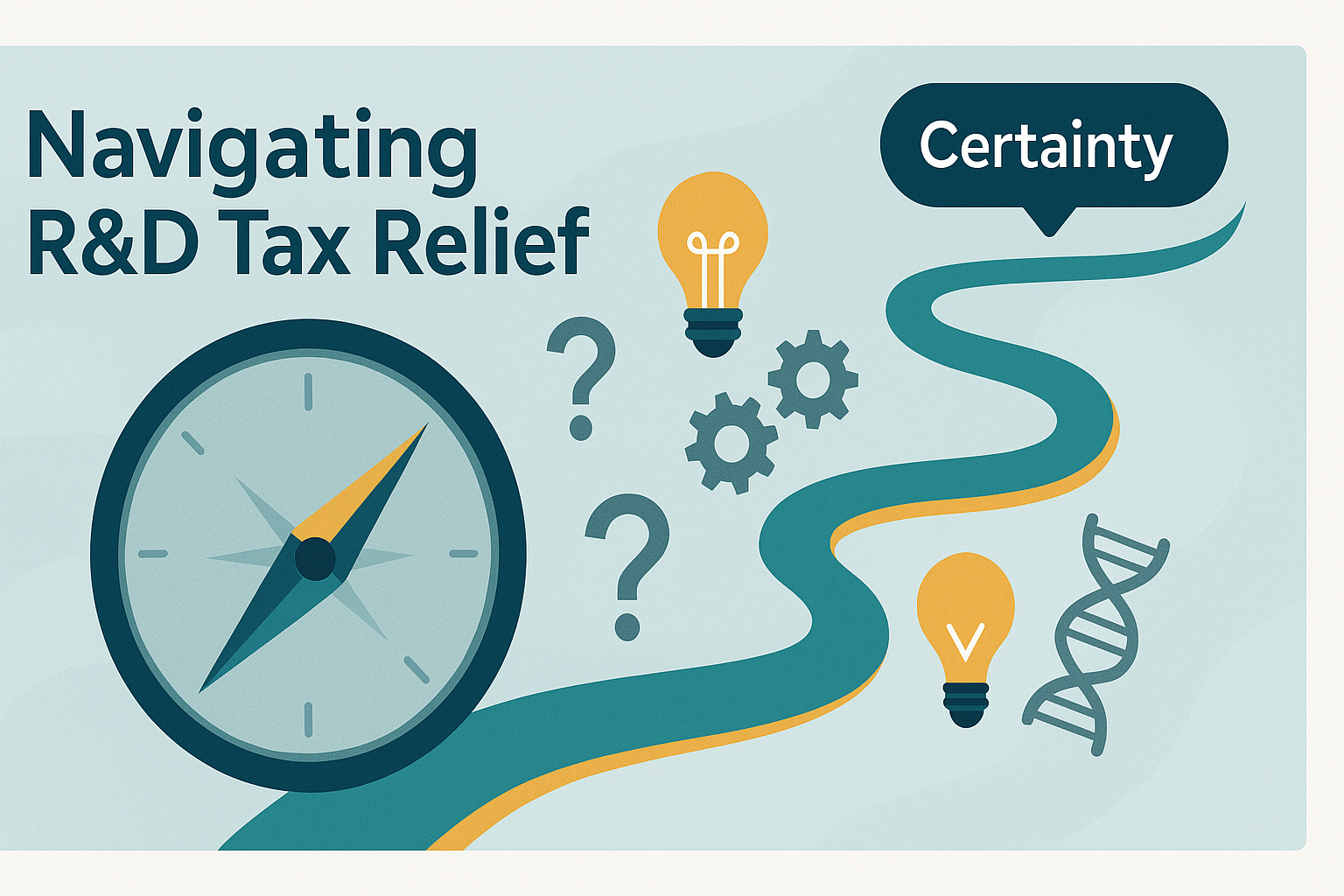
Navigating R&D Tax Relief: A Deep Dive into HMRC's Advanced Clearance Scheme (And Why It Matters Now)
Hi everyone, Karen here. As many of you know, the landscape of R&D tax relief is constantly evolving. One area currently under the spotlight is HMRC's Advanced Clearance scheme – a mechanism designed to give companies certainty about their R&D claims before they even file them. There's an active consultation underway, suggesting changes might be on the horizon, so I wanted to share my perspective on what Advanced Clearance is, its current limitations, and what the future might hold.
What is Advanced Clearance – The Current Picture
In essence, Advanced Clearance allows certain companies to get a form of pre-approval from HMRC, confirming that their planned activities meet the definition of R&D for tax relief purposes. The big draw? Certainty.
However, the current iteration is quite restrictive. As it stands, eligibility is limited to:
- New Claimants: Companies making their very first R&D claim.
- Smaller Companies: Those with a turnover of £2 million or less.
This immediately excludes a vast number of established claimants and larger businesses, which has led to the scheme perhaps not being as impactful as it could be.
Why the Review? The Push for Change
HMRC is currently consulting on the Advanced Clearance process. Why? Because there's a feeling – and HMRC seems to acknowledge this – that the current system might not be fully "fit for purpose." The goal of the review appears to be finding ways to:
- Provide greater certainty to a wider range of companies.
- Better serve both taxpayers and reputable tax advisors.
- Build in compliance checks efficiently without overburdening HMRC.
They're gathering feedback right now, asking businesses and advisors (through a detailed questionnaire) how the system could be improved.
What Could a Future Advanced Clearance Look Like?
The big question is whether eligibility will be expanded. If the scheme were opened up to potentially any business seeking R&D relief, it would be a significant shift. Imagine the value of knowing upfront that HMRC agrees your core project qualifies!
Of course, HMRC couldn't manually vet thousands of applications under the current model; the resources simply aren't there. Therefore, any expansion would likely involve a shift in focus:
- Emphasis on Principles: The clearance would likely continue to focus on the principles of the R&D – the scientific/technological advance, the uncertainties, the baseline – rather than the exact financial figures at that early stage.
- Streamlined Compliance: HMRC would need mechanisms to manage this at scale, perhaps integrating checks more seamlessly into their systems.
The Process: What Does Applying Involve?
Applying for Advanced Clearance (ideally early in your project lifecycle) requires you to provide HMRC with a clear picture of your planned R&D. This includes detailing:
- Your starting point (baseline knowledge).
- The specific scientific or technological uncertainties you aim to resolve.
- The advance you are seeking.
- The key technical challenges and why they aren't easily overcome.
It's about demonstrating the qualifying nature of the intended activities. You won't necessarily know the final project costs at this point, and that's okay – the clearance focuses on the work, not the precise expenditure which gets finalised later.
The Huge Benefit: Certainty
Let's be clear: the main advantage here is certainty. If HMRC grants Advanced Clearance, they typically agree not to query the eligibility of that specific R&D project for tax relief purposes for up to three accounting periods (assuming the project doesn't fundamentally change). This is incredibly valuable peace of mind for businesses investing in innovation.
Why Hasn't It Been More Popular Historically?
From my perspective, there might have been a couple of factors limiting its uptake:
- Advisor Fee Models: In the past, particularly with purely contingent fee models, securing three years of clearance upfront might have been perceived by some less scrupulous advisors as reducing potential future fee income from annual claim checks.
- Direct HMRC Interaction: The process can involve HMRC wanting to speak directly with the technical leads within the business. Some advisors may have historically preferred to manage all communications, potentially discouraging direct client-HMRC interaction, perhaps concerned it might educate the client too much!
The Future Role for Advisors & The Critical Need for Regulation
If Advanced Clearance becomes more widespread, it presents a fantastic opportunity for reputable R&D advisors. Our role can evolve further into providing strategic, upfront support – helping businesses structure their R&D planning effectively and secure that valuable clearance before major investment occurs.
However – and this is crucial – any expansion must come with robust safeguards. We cannot have a situation where unregulated, potentially unqualified individuals are submitting Advanced Clearance applications. HMRC needs to mandate checks to ensure only legitimate, regulated advisors (those supervised for Anti-Money Laundering, using HMRC's Agent Services Account etc.) can perform this function. This isn't just about protecting the profession; it's about protecting businesses from poor advice and ensuring the integrity of the scheme. We need a level playing field where everyone operates to the same high standards.
Connecting the Dots
It's interesting to see how Advanced Clearance fits with other recent HMRC requirements like the mandatory Additional Information Form (AIF) and the Pre-Notification rule (for certain first-time/lapsed claimants). There's a clear trend towards HMRC wanting more detailed information earlier in the process. Advanced Clearance is the earliest stage, followed potentially by Pre-Notification, and then the AIF submitted with the claim. They seem like related pieces of a larger puzzle aimed at improving visibility and compliance.
Final Thoughts
The review of the Advanced Clearance scheme is significant. If implemented thoughtfully, with broader eligibility and strong regulatory safeguards, it could be a hugely positive development, offering welcome certainty to innovative UK businesses. It also highlights the evolving role of specialist advisors in providing proactive, strategic R&D support. It's definitely an area I'll be monitoring closely, and I encourage businesses engaged in R&D to do the same.
← Back to Blog Index